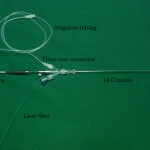Step-by-Step: Robotic kidney transplantation
Robotic kidney transplantation with intraoperative regional hypothermia
Ronney Abaza, Khurshid R. Ghani*, Akshay Sood*, Rajesh Ahlawat†, Ramesh K. Kumar*, Wooju Jeong*, Mahendra Bhandari*, Vijay Kher† and Mani Menon*
Department of Urology, Ohio State University, Columbus, OH, *Vattikuti Urology Institute, Henry Ford Hospital, Detroit, MI, USA, and †Kidney and Urology Institute, Medanta-The Medicity, Gurgaon, India
OBJECTIVE
• To describe a novel and reproducible technique of robotic kidney transplantation (RKT) that requires no repositioning, and permits intraoperative regional hypothermia.
PATIENTS AND METHODS
• A GelPOINT™ (Applied Medical, Santa Ranchero, CA, USA) access port was used for delivery of ice-slush and introduction of the graft kidney. The new RKT technique using ice-slush has been performed in 39 patients.
RESULTS
• At a mean follow-up of 3 months all of the grafts functioned. There was a marked reduction in pain and analgesic requirement compared with patients undergoing open KT, with a propensity towards quicker graft recovery and lower complication rate.
CONCLUSION
• RKT has been shown to be safe and feasible in patients undergoing living-donor related KT. A prospective trial is underway to assess outcomes definitively.



